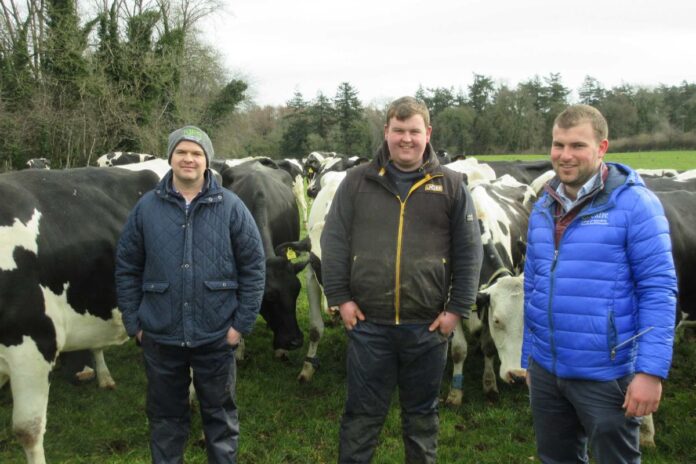Fertiliser applications this spring
In this article, dairy technologists, Robert Patterson, and Aidan Cushnahan, discuss fertiliser applications this spring.
At this critical decision-making stage in the 2022 growing season, farmers may be questioning how much fertiliser they should apply to grazing swards.
Take the following steps to optimise the use of inorganic N on your farm.
Start by carrying out a fodder budget for the grazing season and next winter. This will allow you to determine the required areas for grazing and cutting on your farm.
Increasing the herd grazing demand by increasing the amount of livestock grazing and the number of days at grass, will reduce the herd’s conserved fodder requirements.
However, this will also reduce the area available to produce winter fodder. A reduction in grass yield for grazing, will result in a higher requirement for supplement feed, which will come at a higher cost.
Consider options that will increase N use efficiency on your farm.
N use efficiency can describe the grass growth response (kg DM) per unit (kg) of total available nitrogen.
The following factors can influence it:
- Timing and accuracy of application;
- Soil conditions;
- Grazing management.
How much should you apply?
Apply a total of 50 to 60 kg N/ ha by mid – April (including N applied through early spring slurry applications) and 20 to 40 kg N/ ha thereafter following each grazing in spring to ensure optimal grass growth.
N applied under optimal spring conditions can yield over 20 kg DM per kg N applied.
Applying the same product in poor conditions can yield a response of less than 10 kg DM per kg N applied.
For optimal growth, the grass plant requires a balanced supply of nutrients including N, P, K & S across the growing season.
The DAERA Online Crop Nutrient Calculator should be used to create a nutrient management plan for your grazing platform. Ensuring soil pH is correct (6.3) will be essential to maximise the use of applied N.
When should you spread fertiliser?
Apply fertiliser N now to get grass growing. April and May are key grass growing months in terms of growth response per kg N.
With the first application of N target paddocks with low or medium covers (less than 2,500 kg DM/ha) and paddocks which have already been grazed. Paddocks with grass covers greater than 2,500 kg DM/ ha could be grazed off before receiving fertiliser.
However, it will be important to apply N to these swards promptly after grazing as they will have a high demand.
The aim should be to apply 50 to 60 kg N / ha by mid – April, including N applied through early applications of organic manures, to ensure optimal grass growth.
Using the DAERA online crop nutrient calculator programme will allow you to determine the value of slurry you have applied.
Apply nitrogen in a ‘little and often’ approach following grazing. Ideally, apply N on a proportion of the grazing platform on a weekly or bi-weekly basis.
The amount of N applied between grazing should be 20 to 40 kg N/ ha, depending on stocking rate and the number of days between grazings.
Reassessing the accuracy of the field areas, recalibrating the fertiliser sower and using precision application techniques, are simple steps that farmers can take this season that could add up to significant savings.
For example, overestimating the area of a 40-ha grazing platform by 10% receiving 200 kg N / ha would equate to an additional 3.0 tonnes of a CAN 27% N product.
Grassland management
Good grazing management depends on balancing the supply of high-quality grass for grazing against the grass demand throughout the season.
Early spring is the crucial time in the grazing season to establish sward performance and quality for the rest of the season.
Grazing management in its simplest form is grazing the plant at its 3-leaf stage, in no more than three days and resting the plant for roughly three weeks.
Start to measure grass on a weekly basis. This will provide information that will help you make better decisions on managing grass surpluses or deficits before they become an issue.
Establish a grazing wedge as quickly as possible and target low residuals (1500 – 1650 kg DM /ha) now when conditions allow, to ensure good grass quality for the following rotations.
In summary, dairy farmers considering reducing fertiliser N applications for grazing should focus on increasing their nitrogen use efficiency and critically review the full impact of this option before adopting it.
Discuss the options that best meet the needs of your own farm with the local CAFRE dairy adviser.
The key message is that maximising the proportion of quality grazed grass in the diet of dairy cows this year will provide the most cost-effective basis for milk production.
Therefore, nitrogen (N) input cannot be reduced to levels where grass growth is not maintained.
Other articles:





